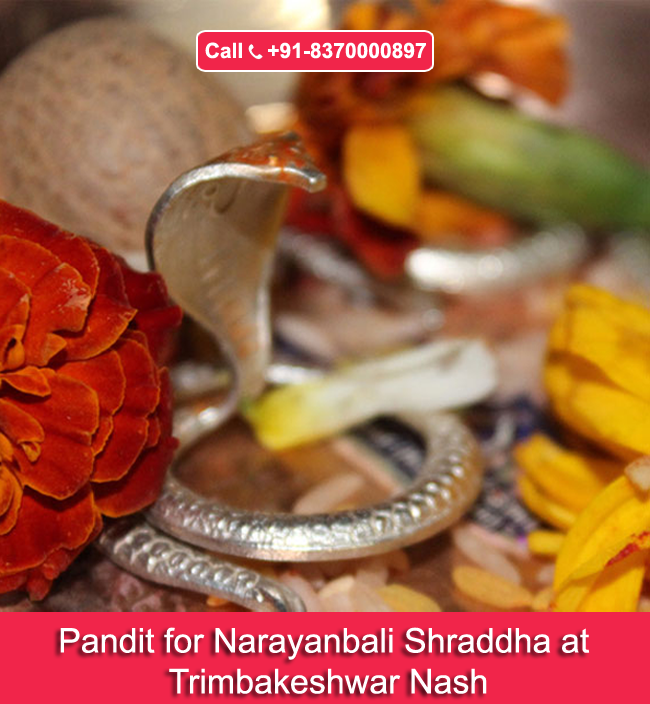Trimbakeshwar Temple Nashik Kaal Sarp Pooja
Trimbakeshwar is one of the Twelve Jyotirlingaas in the town of Trimbak atNashik district from Maharashtra
Narayan Nagbali Puja
The Narayan Nagbali Puja (Pitra dosh) is a three-day long Vedic ceremony. This Puja is divided into two types: Narayan Bali Puja and Nagbali Puja. Both Pujas are conducted for two distinct causes. Narayan Bali is conducted to purify oneself of dissatisfied souls, whereas Nagbali Puja is undertaken to purify oneself of the sin of killing a cobra or snake. Both the Puja Narayan Bali and Nagbali Puja were celebrated in Nashik, Maharashtra, at Ahilya Godavari Sangam and Sati Maha-Smashan near Trimabkeshwar Temple.
Trimbakeshwar Temple is a great location for numerous additional temples. Those who visit Trimbakeshwar are considered to receive salvation (sadgati). This location is devoted to Lord Shiva and is used for a specific ceremony known as Narayan Nagbali, which is conducted by an old Brahmin known as Tamprapatradhari Purohit. It is claimed that the Ganga Godavari River originates here, flowing from the Brahmgiri hills (1295 m above sea level), which are located close below the famous Trimbakeshwar Shiva Temple. It is a tirtha kshetra and one among India's 12 Jyotirlingas. As a consequence, doing any Pooja at this sacred site yields beneficial benefits.

Dear Yajmana, Please keep in mind that these Trimbakeshwar poojas should be performed by Tamprapatra holder panditji since they are legitimate and have had the authority to do pujas in Trimbakeshwar for many years. Pujas performed by this panditji will result in satisfaction and a complete solution to your problem. We want you to contact the most reliable provider.
"शस्त्रघातमृताये चा स्पर्शस्पृष्टवा तथैव च तत्तु दुर्मरणम ग्येयम यच्चजातं विधिंविना।
अतःतस्य सुतै पौत्रे सपिंडैशुभमिच्छुभिः नारायणबलिं कार्यो लोकगर्धाभिया खग"
Narayan Nagbali Puja Cost:
he cost of Narayan Nagbali puja is determined by the Tamprapatradhari Guruji's havan (Homam) and Samgri utilised for pooja. After the pooja ceremony is over, it is entirely up to the devotees (Yajmana) to decide how much Dakshina he offers.